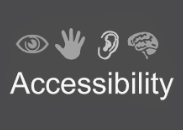Touch screen flight decks are rapidly moving into the mainstream of avionics with A D Metro emerging as a leader in driving their use in aircraft. For years, touch screens were considered inappropriate for avionics, with arguments that touch screens were difficult to due to the touch sensor’s substrate.
Major challenges in using touch screens in avionics is as follows:
- Light and glare: Sunlight and reflections on the screen can wash out information and make touch targets hard to see.
- Accidental inputs: Accidental touches due to turbulence or armrests can lead to unintended touch events.
- Physical durability: Touch screens exposed to extreme temperatures, vibrations, and changes in cabin pressure can impact the durability.
The Reliable Solution: A D Metro’s LCIR Touch Technology:
A D Metro has engineered and expanded its product line with Linear Correlating Infrared (LCIR) touch technology, which is an advanced IR-infrared touch screen designed to deliver highly responsive, precise, zero-force operation.
Linear Correlating Infrared (LCIR) touch screens have been developed, specifically for aviation applications to deal with the interference of intense sunlight hampering display viewing. LCIR touch sensor is mounted as a compact bezel that frames the display surface and does not use a glass substrate panel to mount the optics frame. It allows unhindered optical clarity, which is crucial in aviation.
The LCIR technology looks at a group of 5 light beams simultaneously as the group progresses across each plane of the screen. This allows for wider beam optics and eliminates the need for a glass panel, keeping narrow beam optics aligned. As a result, there’s complete ambient light immunity even if it is strobing sunlight or bright light or both.
LCIR touch screens use a linear correlation technique enabling communication through optical signals across multiple points on the display surface. It helps achieve excellent reliability and touch precision. A D Metro’s advanced IR-infrared touch screens also deliver two-touch performance by using optical scans at angles across the touch sensing area. This is an excellent feature for applications requiring pinch, zoom, and rotate operations. In LCIR, the touch input is not specific to human capacitance and is compatible to be used with gloved fingers and a 5mm stylus.
Unlike resistive touch screens, there are no moving parts or air gaps in LCIR. Thus, it offers consistent performance across temperature and pressure extremes while increasing the durability of the application. Moreover, it is 100% EMI and RFI immune, eliminating the risk of loss of touch response that is caused by RF interference.
LCIR touch systems consist of a sensor frame and a separate external controller board. This makes the touch frame compact and easy to integrate into most displays, whereas other frames are quite large with restricting frame heights and widths, which can make integration a challenge.
Conclusion:
A D Metro’s LCIR touch technology has revolutionized the aviation industry by making touchscreen a reliable and durable part of avionic instrument panels. Optical clarity with maximum contrast (even in strobing sunlight), responsiveness, precision, and reliable two-touch functionality are features making this advanced version of IR-infrared touch screens an excellent choice for avionics.







